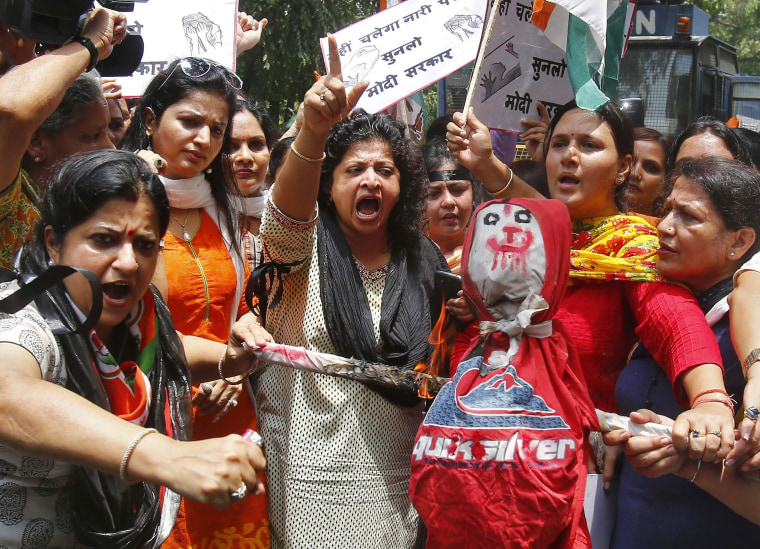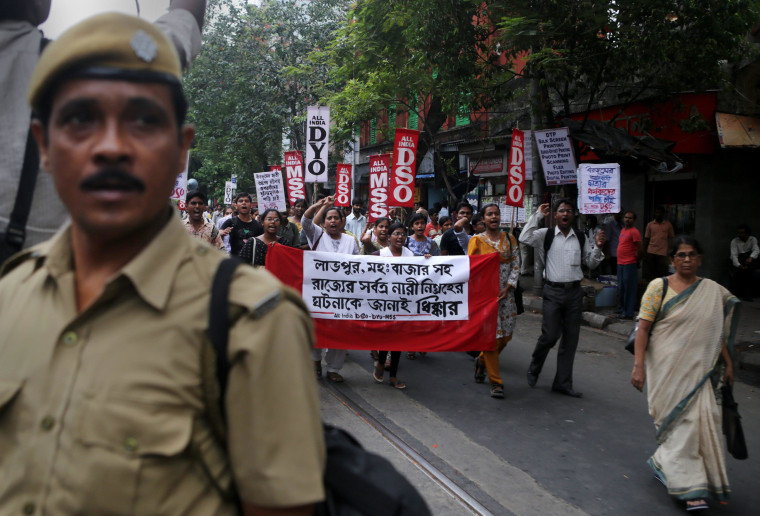NEW DELHI, India — Every morning, Swati Gupta leaves home at 8:00 a.m. and takes the bus from New Delhi to Gurgaon to work a 10-hour shift at a swank mall in Delhi's satellite city — a neighborhood that provides economic opportunities for millions of Indians.
But after the gang rape and murder of a 23-year-old student on a New Delhi bus in December 2012, Swati’s family started objecting.
“My brother was very worried," she says. "My shift usually gets over at 8:00 p.m. and I would invariably get a call at around that time from my mother or brother to check if I had left. They wanted me to leave the job and find something with better hours.”
Eventually, Swati, 26, struck a compromise with her employers to pacify her family. She began leaving an hour earlier even if that meant a pay cut.
“It was worth it," she says. "Frankly, I was scared to travel so late by bus and I didn’t mind being paid a little less to be able to leave early and get home in good time.”
She wasn’t the only one concerned. The Associated Chambers of Commerce and Industry in India (ASSOCHAM), one of the country’s leading trade bodies, conducted a survey in January 2013 that confirmed that productivity of female workers dipped more than 40 percent in the weeks following the Delhi Gang rape, as it's known locally.
About 82 percent of the women surveyed had started leaving their offices before sunset, mainly because they feared traveling by bus or other public transportation in the evening hours.
"People were wary of traveling to India, and foreign tour operators were not even willing to take bookings from women who wanted to travel alone.”
While the industry body is yet to conduct a follow-up survey to see where things stand today, or what the net economic loss is as a result of fear, Ranjana Kumari, a leading Indian feminist believes the economic impact of India’s rape culture is huge.
Her organization, the Centre for Social Research in New Delhi, has been tracking rape survivors in Delhi since January 2013.

“While I can’t tell you exact figures, what we have observed is that the economic capacity of working women takes a hit due to these incidents," she said. "A survivor almost always has to give up her job to deal with the psychological trauma of rape. Often the survivor migrates to get away from the place where it happened, and has to dole out cash to follow a case through the police and the courts as bribes.”
“Of course, it’s impossible to put a number on how this impacts the overall economy in India," she added. "We haven’t seen this kind of research so far.”
The one industry that has felt the impact in a big way is India’s tourism sector.
"The numbers go up every time there is an incident reported but on an average we provide guards to 3-5 tourists every month.”
In the first three months after the December 2012 incident, foreign female tourist arrivals dropped in India by 35 percent. It hasn't helped that since then, there have been a spate of sexual assault cases involving attacks on Western female tourists, including women from theUnited States, Switzerland, Denmark and Britain. Recently, Great Britain joined a long list of countries to issue travel advisories cautioning their citizens about visiting India.
“We witnessed a dip in foreign tourist arrivals due to these incidents," says Randhir Brar, executive director of Le Passage to India, a tour operator in India. "People were wary of traveling to India, and foreign tour operators were not even willing to take bookings from women who wanted to travel alone.”
As a result, industry experts estimate that the average annual drop in foreign female tourists now stands at 10 percent.

This is a huge economic loss for India where tourism accounts for nearly 6 percent of the gross domestic product. Foreign tourism accounts for 10 percent of organized employment in the country, or some 20 million jobs, and contributes about $18 billion annually to the country’s economy.
The tourism industry is concerned.
“We began talking to the government about these issues and they have responded by taking certain safety measures, and starting campaigns to improve India’s image abroad,” said Brar.
These measures include a specially created tourism police that will patrol major tourist spots, and a multilingual toll free helpline that will be answered by women. The helpline will provide a number of services to tourists including giving them details on the closest police stations and how to register complaints.
“The Indian government really needs to consider how it wants to be viewed...As long as violence against women persists, naturally tourists will want to stay away"
“The important thing is to remember that safety issues are not unique to India. You are as likely to be attacked in Harlem as in New Delhi,” argues Subhash Goel, the president of Indian Tour operators in defense of the country’s tourism industry.
He concedes that the high number of incidents have led to an adverse impact but maintains that tourists will be safe in India if they take certain precautionary measures.
“My advice would be that tourists should travel through government approved tour operators," he says. "But so many people want to travel alone these days, at least they should not go to lonely places or venture out late at night.”
Many tour operators have taken it upon themselves to provide greater security to women. “We have seen an increase in the number of exclusive tours for women,” says Brar. Hotels are even designating women-only floors.
The Imperial, a luxury hotel in New Delhi, has created a “single lady corridor” of 12 rooms, each with a security camera on the door, with an all-female staff. Some agencies like Secura Security in New Delhi have begun offering personal security guards to foreign tourists at a cost of $100 for 8 hours.
“Following the December 2012 incident we began getting a lot of calls from tourists and so we introduced this service," says Anuraag Sinha, the COO of Secura Security. "The numbers go up every time there is an incident reported but on an average we provide guards to 3-5 tourists every month.”
Over the last two years, various taxi operators in India have invested in GPS technology to upgrade their services, also to track tourists using their cabs.
For instance, operators like Meru Cabs in Delhi have phased out old cars that were not equipped with GPS technology. This is equally useful for Indian citizens as it is for tourists. At the Delhi International airport, Delhi Police official note down the cab number and passenger that leaves from the airport.
“The Indian government really needs to consider how it wants to be viewed," said Kumari. "As long as violence against women persists, naturally tourists will want to stay away. In order to change its image abroad, the government will have to provide safer conditions for its own female citizens — that will send out the right message.”

This story first appeared on GlobalPost.
More from GlobalPost:
Struggling to save Punjab's next generation
This chart shows which countries produce most electricity from renewables